This post contains affiliate links. Which means I will make a commission at no extra cost to you should you click through and make a purchase. Read the full disclosure here.
Have you heard the advice that you should use alt text to set your Pinterest description?
I bet you’ve heard this advice a dozen times. But you know what?
This advice is 100% wrong!
And I’m going to show you exactly why this Pinterest description advice should really be considered a myth.
As well, as comprehensive details on what you should be using instead.
But before that, how did I get to this realization if the first place?
- I Was Researching How To Write A Pinterest Description As A New Blogger, Just Like You.
- Pinterest SEO vs Google SEO
- How Should I Write The Alt Text For Images SEO Then?
- How Do You Write Pinterest Descriptions Without Using Alt Text?
- Bonus Tips To Optimize Images For Pinterest!
- How You Can Implement All These Attributes Yourself
- The Advantages Of Using This Pinterest Description Method
- Troubleshooting Pinterest Description Problems
- Alternatives To Coding Your Pinterest Description Manually
- The Right Way To Write Your Pinterest Description For Your Blog Images
I Was Researching How To Write A Pinterest Description As A New Blogger, Just Like You.
When I was searching for ways to optimize images for Pinterest on my blog. I frequently came across the idea that you should set your Pinterest description using the image’s alt tag.
Since so many sites suggested it was common practice. I almost made the mistake of doing this myself without a second thought.
Luckily, after doing some further research. I came across one last blog post, by Paul Drecksler at WorkFromSomewhere that suggested that this was not the best idea.
And suggested an alternative method instead. One which I have been using for awhile now with optimistic results.
After practicing and tweaking this alternative method for writing a pre-populated Pinterest description. I have perfected a routine that optimizes my Pinterest images without hurting their SEO value.
A method you can also discover by following along with me through this blog post below. Sounds good?
Well, as a bonus, you’ll even get the exact formulas I use myself so you can quickly start applying their magic to your own pins!
Or if you’d rather go down the faster and code-free route. Then check out this plugin that will help you do the same process in just a couple of clicks.
📌 Pin this post to your Blogging board to read it later! 📌

Pinterest SEO vs Google SEO
You’ve heard it a thousand times how Pinterest is a search engine rather than a social media site. But did you know Pinterest has its own Search Engine Optimization (SEO)?
Get this: Pinterest SEO can sometimes conflict with other SEO practices. And in some cases negatively affect your rankings for engines like Google.
But hang on a minute!
Many bloggers report that Pinterest gets them the majority of their traffic. Surely this means that Pinterest SEO is more important for bloggers, right?
Wrong!
If you compare Google to Pinterest. Google gets around 3.5 billion searches per day, that’s around 100+ billion per month.
Pinterest only gets around 2 billion per month. This figure is rapidly growing but it’s currently just not comparable.
Clearly ranking high in Google has a lot of potential for organic traffic to your site. So it’s important to play by their rules.
Don’t worry though, I’ll show you how to make your pins boost both your Pinterest SEO and Google’s. You’ll get to have your cake and eat it!
Before we go any further though, it is vital to understand how you should be using alt text for images SEO first.
How Should I Write The Alt Text For Images SEO Then?
So stick with me here. You need to make sure you use alt text correctly.
Why? Because even if you use a Google-friendly Pinterest description. You can still hurt your Google SEO if the alt text isn’t set up correctly.
Even if you know how to use alt text. It’s well worth refreshing yourself.
This valuable information will help you breeze through any alt text attributes you decide to go back and fix. Only once you’ve finished reading this post, of course. 😉
Right so the alt text for images best practices that you need to know are these:
Image alt text is extra information that is often not seen by most people viewing it. Its primary use is for visually impaired user’s to have the text read out loud by software.
It can also be used to show text when there was a problem loading the image. And search engines use it for context and indexing.
Fact: Screen readers that read out-loud your alt text often cut off at 125 characters and google only looks at the first 16 words.
This means your alt text for images SEO should be concise but descriptive. Enough to improve usability for visually impaired users and let Google know what your image is about.
It should NOT be stuffed with keywords, URLs, hashtags or call to actions. Which are all the things you do to optimize images for
See what I mean about using alt text for your Pinterest descriptions and how it conflicts with Google’s SEO?

How Do You Write Pinterest Descriptions Without Using Alt Text?
So if you’re not supposed to be using alt text, what are you supposed to be using then?
It turns out, Pinterest has its own specific attributes or HTML tags as some might call them. Including one specifically for writing your Pinterest description.
And it looks a bit like this:
data-pin-description="Insert your Pinterest description here!"
But where does this even go?
Well, you’ll need to add it to the HTML code of the Pinterest images you add to your blog posts.
This is actually quite simple in the WordPress Gutenberg editor. As you can simply click on the image block you want to make into a Pinterest pin.
Then click the More Options button (this is the 3 vertical dots button).
And select Edit as HTML.
You can then add the above code snippet straight after <img (Just make sure to leave a space before and after the code you paste in.)
Once done you can revert back to the other view by clicking the More Options again. And then clicking Edit visually.
You can also add the below code straight into a new Custom HTML block. And then fill in the image URL and other information.
<img src="https://yourwebsite.com/image-url.jpg" alt="Describe the image for visually impaired users using Google SEO friendly text" data-pin-description="Compelling descriptive copy | Call to action | keywords | hashtags" />
If you want to do this in the Classic editor it is a little more complicated. You’ll have to switch to the Text tab at the top right of the editor and find your image code manually from there.
This is one of those times I find it much quicker and easier to use the Gutenberg editor over the Classic editor. In fact, I even went as far as to set up this Pinterest description code as a reusable block
Bonus Tips To Optimize Images For Pinterest!

Guess what?
There is more than just the Pinterest description code that you can use to optimize your Pins.
In addition to the Pinterest data-pin-description, you can also use:
- data-pin-url
- data-pin-id
- data-pin-media.
These are all powerful tools to craft the perfect pins. Whilst looking after your Google and Pinterest SEO.
Let’s take a look at what each one can do.
How The Data-pin-url Code Can Help Optimize Your Pinterest Images
No one likes to click on a Pin and end up at an irrelevant page.
The Data-pin-
Use it to make sure they land exactly where they should, on your pin relevant page!
How To Use The Data-pin-id To Optimize Your Pinterest Images
Next up, the data-pin-id can be set to the ID of your pin. This is completely optional and doesn’t seem to work as well as I’d hoped.
So when people
What does this mean exactly? Well, I tested this for ages and never really saw much difference.
When I finally figured it out I realized what it is actually useful for. And I felt a little silly for not realizing this earlier.
But what you can do is set the data-pin-id, to your most popular pin on Pinterest that links back to the same blog post.
In theory, when someone then saves this pin from your blog with the data-pin-id set. The pin whose ID you used will get credit on Pinterest for the save instead. Meaning it will get more engagement and hopefully this will lead to more clicks back to your blog.
It’s also good for seeing slightly more accurate and easier to understand
Sadly it doesn’t always work this way though. As Pinterest isn’t able to combine the stats of all the same pins together. It tries, but it’s not 100% there yet.
How To Find Your Pinterest Pin ID
Also, in case you are wondering where to get the Pin ID number from. You’ll need to pin your image first.
Once it’s been pinned once, preferably by you. You can then open the
At the top of the browser, where you can find the URL of the page you are on. You should see something like this:

The pin ID is the long string of numbers I have bolded here:
https://www.pinterest.co.uk/pin/457185799665569417/
This number is unique per Pin, so make sure you use your own Pin IDs and not this one of a super cute red panda! 🙂
Note: Every time you repin something on Pinterest the Pin ID changes. Even if you set the data-pin-id any repin of this will still change the ID. The same is true even if you pin directly from a blog post with the data-pin-id set.
Overall, it’s extra work to implement the pin ID attribute. Something which hasn’t been worth the effort in my opinion so I no longer use it.
But let’s be honest, it’s hard to tell if it works or not when Pinterest analytics can be a bit all over the place.
How To Use The Data-pin-media To Optimize Your Pinterest Pins
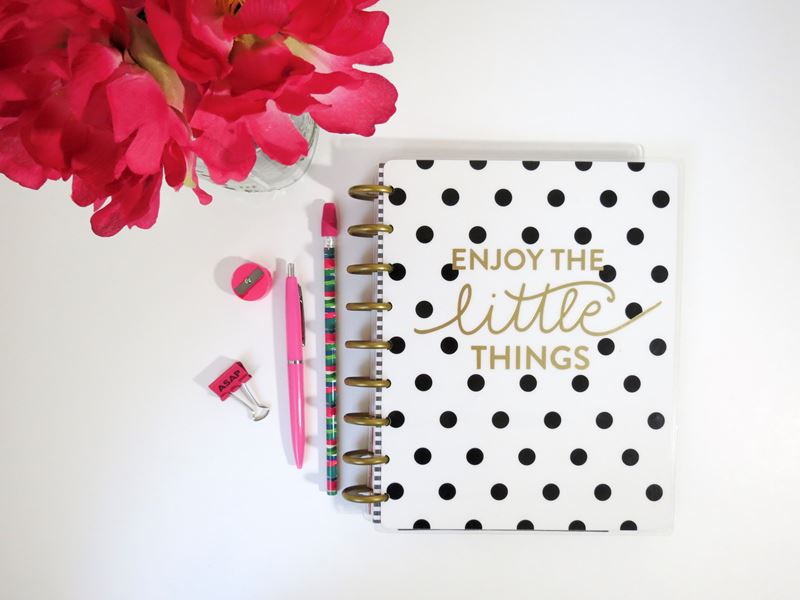
Lastly, the data-pin-media code can be used to control what image is used for the pin on Pinterest.
This attribute is a nifty little way to help keep your page’s load speed down by optimizing your blog images. Whilst still providing the high-quality images Pinterest users love.
For example, you can add a smaller image to display on your blog post like 500x750px. That’s optimized for a mobile-friendly experience by compressing the image’s file size for the web.
You can then add the data-pin-media attribute to your image’s HTML. Which can then be set to a high-quality image that will be sent to Pinterest. This would normally be the currently recommended Pinterest image size of 1000x1500px
Just by using a 50% smaller image in your post like this example. You’ll already be saving 50% more of your blog’s loading speed.
Not to mention your mobile visitors will truly appreciate not having to scroll past your huge Pinterest image just to read your content.
That’s right – a faster page load speed and high-quality images all-in-one! If that isn’t a compelling reason to be using these attributes in your own pins. Then I don’t know what is!
How You Can Implement All These Attributes Yourself
So, what’s the magic formula to use all of these together?
Here’s an example of how I craft them together into an optimized pin:
<img src="small-compressed-image-url.jpg" data-pin-media="high-quality-image-url.jpg" alt="Describe the image visually using SEO friendly text" data-pin-description="Write your Pinterest descriptive copy here | Include a Call to action | Add a few #hashtags" data-pin-url="URL of page Pin should send you to" data-pin-id="Pin ID goes here" />
There are other codes but the ones I have detailed here are the most useful. You can check one of Pinterest’s
Also, make sure you checkout their guidelines for best practices for success on Pinterest.
The Advantages Of Using This Pinterest Description Method
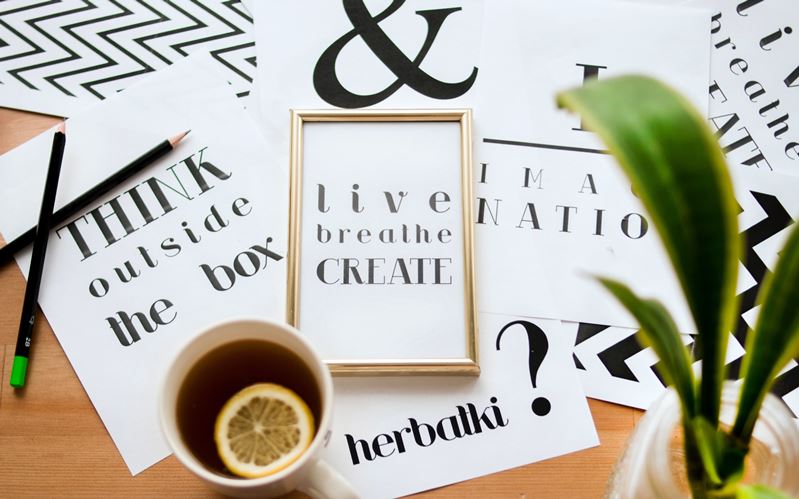
One of the main advantages of using this method of adding data-pin-description. As well as the other code snippets mentioned here.
Is that it works with every way that your visitors might try to pin from your blog posts.
Regardless of whether it is:
- Social media buttons you’ve added to the post using a plugin like Social Warfare
- The Pinterest pin button that hovers over your individual images
- Through the Chrome or Firefox browser extension which adds a Pinterest button to your toolbar
- Or simply the Tailwind extension to pin your content through a scheduler
There’s been plenty of times, I’ve tried to pin content from other blogs. And found that the Pinterest description isn’t populated.
Which sucks because it means those pins aren’t getting the full Pinterest SEO they deserve.
Troubleshooting Pinterest Description Problems
I’ve been using this method for a long time now. And now and then something changes on Pinterest’s end.
Resulting in some weird stuff going on with my Pinterest descriptions and Pinterest images on my blog.
It’s pretty rare, but things can go wrong. And if it’s on Pinterest’s end there might not be much you can do about it.
So, what I can say, is that certain things will result in your Pinterest images going missing. Other times you might find missing Pinterest descriptions.
There are a few things you can look out for that cause problems with Pinterest images or descriptions not working. Which are covered in detail here.
But to summarize these are what you should watch out for:
- Lazy load for images can sometimes result in your Pinterest images and Pinterest description not showing. This is usually due to hidden Pinterest images in a blog post. As Pinterest cannot find the information to load. Since lazy load won’t load hidden images in the background! You can quickly test this by disabling lazy-load to see if it makes a difference.
- Do not set the src=”” and data-pin-media=”” to the same image. If you are going to only use one image then you do not need to set the data-pin-media. Simply add your image URL to the src=
“” attribute only. - Try using a different Social Media sharing buttons plugin. For example, I have found the Easy Social Share Buttons plugin to be quite buggy when it comes to populating Pinterest descriptions. And that it is quite often missing Pinterest descriptions. I haven’t found any problems using Social Warfare, Shareaholic or Social Pug.
Alternatives To Coding Your Pinterest Description Manually

Not a fan of editing code?
Editing all the code for Pinterest descriptions across all your pages or posts could get quite cumbersome. So I tried to see if there was a more user-friendly way to manage these.
Using Tasty Pins To Add Pinterest Descriptions
One way I managed to find that would allow me to add a Pinterest description without writing any code. Was for a WordPress plugin called Tasty Pins.
It allows you to control some common aspects of creating pins in a user-friendly interface. Like:
- Set Pinterest descriptions in the Media Library – Similar to data-pin-description this keeps them separate to your alt text, which is good for your SEO.
- Hide Pinterest specific images on the page – An alternative for using the data-pin-media. Allowing you to hide big and high-quality images which take up too much screen space. Hiding your images won’t always reduce your page load. So if you do try to use it in this way make sure to do page speed tests before and after!
- Disable Pinning certain images – Not all images are Pinterest friendly, so this lets you disable those. If you have lots of images on a page then this is the perfect way to declutter all the other images that appear when pinning. Making it much easier for users to find the images you actually want them to pin!
For the added convenience Tasty Pins offers, I recommend it for anyone not comfortable with coding. As I believe being Google SEO friendly is super important.
Not to mention, it’s actually much faster since you’re skipping lots of copying, pasting and editing the code in the first place.
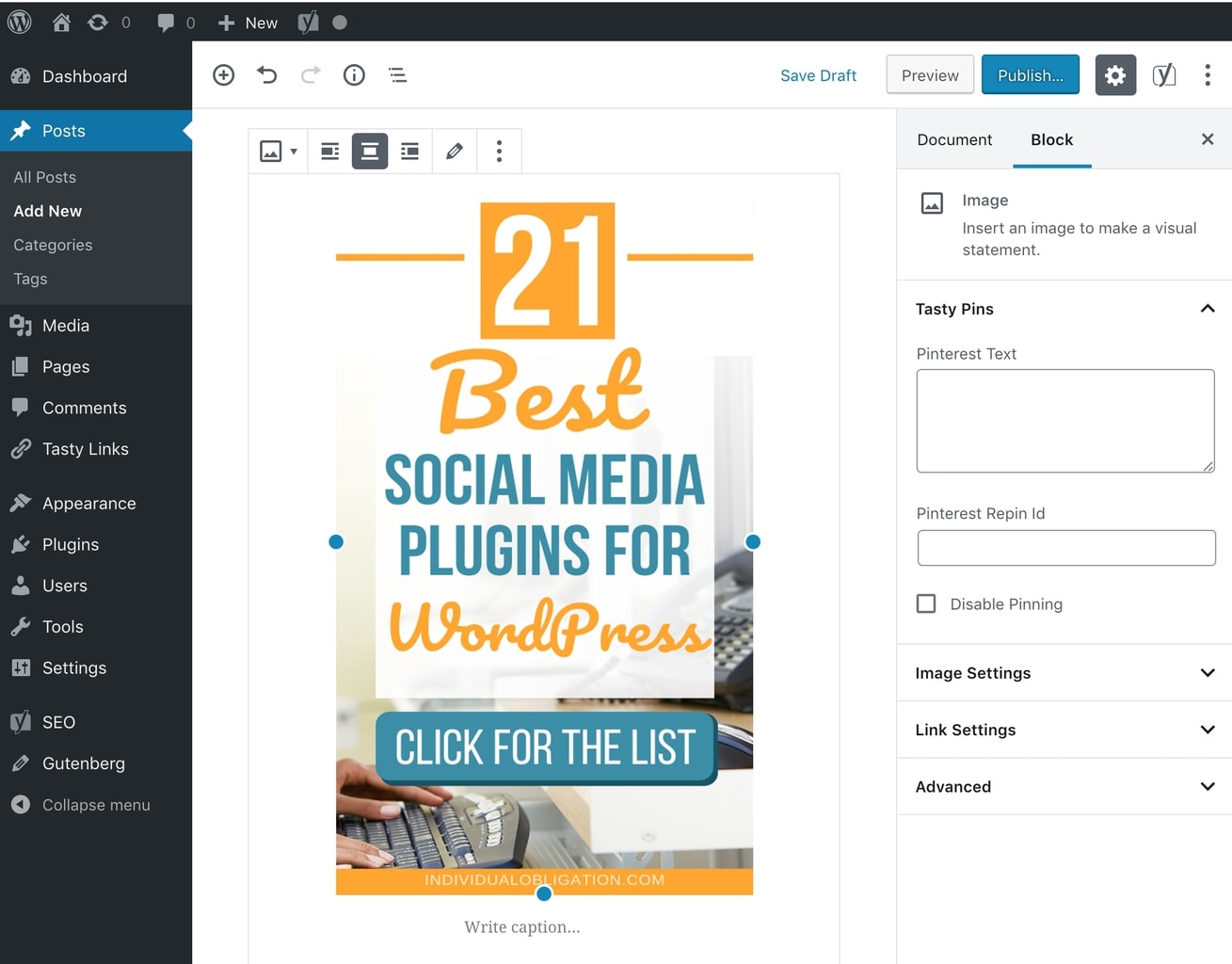
Social Warfare For Writing Pinterest Descriptions
Another option I’ve recently found as a Tasty Pins Alternative. Is the Social Warfare plugin.
This WordPress plugin will add Social Media sharing buttons to your blog. But it also keeps in mind that your Pinterest SEO and Google SEO should be handled differently.
However, whilst it removes the need to add any code to your blog posts to optimize your Pinterest SEO and Google SEO. There are a few things you need to bare in mind with this tool:
- Setting a Pinterest description Requires their Pro plugin installed ($29/year)
- It only sets one Pinterest description per page, even if you have multiple pins
- Can cause errors with certain blog setups
The Right Way To Write Your Pinterest Description For Your Blog Images
So by now, you hopefully understand that whilst Pinterest SEO is important. Google SEO should always take priority.
And that you should never use alt text to write your Pinterest descriptions.
Especially since you can always use the Pinterest description code data-pin-description instead. With these Pinterest attributes, there’s simply no reason to keep using alt text.
In fact, I recommend copying and pasting the code I use. So you can utilize the other powerful Pinterest attributes I’ve mentioned here.
Or if you’d rather avoid using code and want to speed up the entire process then WP Tasty Pins is ideal.
Oh and here’s the code again if you didn’t grab it earlier 😉
<img src="small-compressed-image-url.jpg" data-pin-media="high-quality-image-url.jpg" alt="Describe the image visually using SEO friendly text" data-pin-description="Write your Pinterest descriptive copy here | Include a Call to action | Add a few #hashtags" data-pin-url="URL of page Pin should send you to" data-pin-id="Pin ID goes here" />
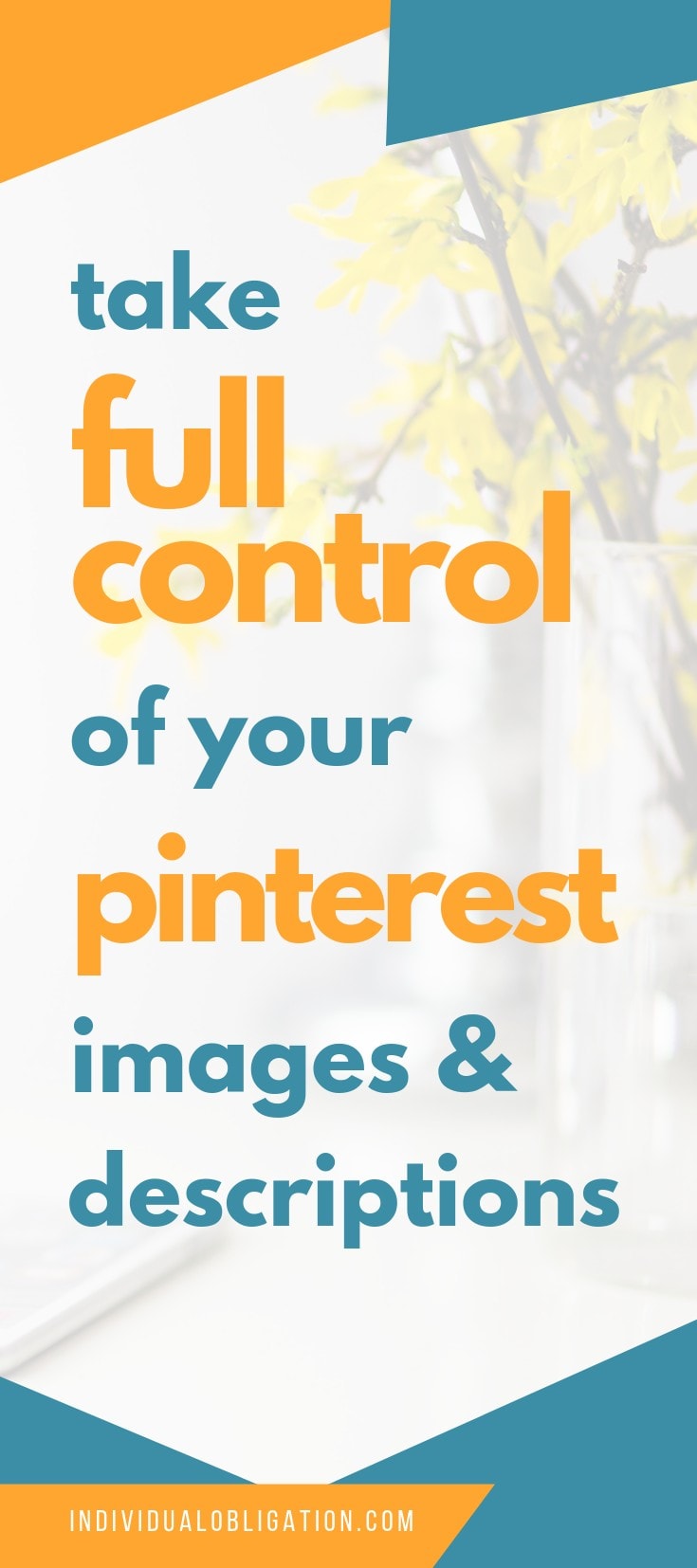


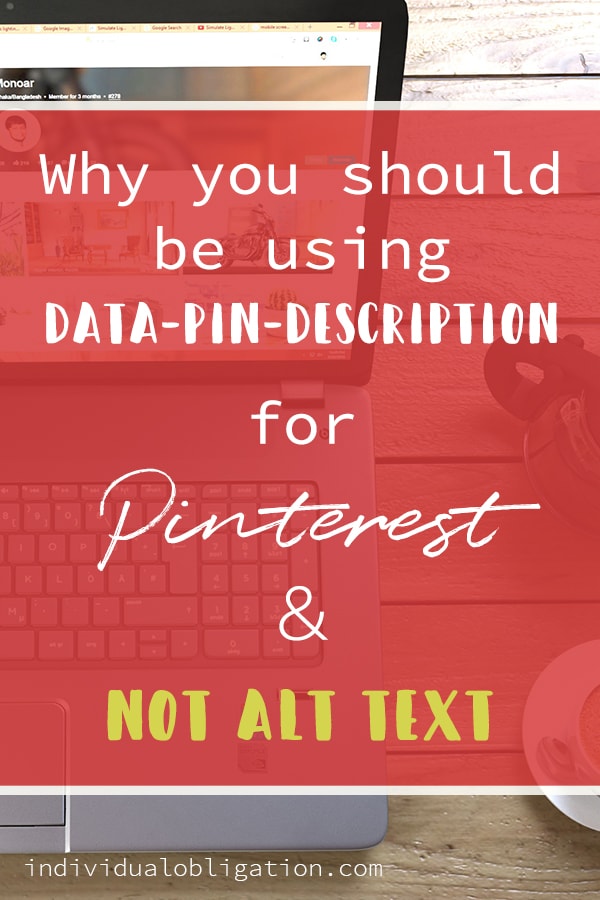
I have read this and saved the link so I can read it again. For the 3rd time!
Hey Richard, thanks for the comment! I’m glad you are finding the information useful ^^
Also, apologies for not responding sooner, for some reason my anti-spam is being hyper-sensitive.
This is an awesome tip. Never realised that the advice all the other expert pinners were offering was so wrong. Thank you for sharing.
Thank you for your comment, I’m glad you found the information helpful 🙂
Where do we put this code? I’m confused. Do we put it in the alt text window?
Hey Alyssa,
Sadly, it doesn’t work if you add it to the alt text window. You would have to add this code into your post’s HTML. In the WordPress Classic editor you can do this by switching from the Visual tab to the Text one. You then need to find your image’s code which starts with
and ends with
and this is what you want to replace with the Pinterest description code from this post.
It is much easier in the Gutenberg editor. As you can simply add a HTML block where you want your pin and paste the sample code straight in. You then just add in your URL, description, etc.
I hope this helps 🙂
Hi Lisa,
What a great read. I didn’t know there was this option as I’ve been using my alt description up until now. So it’s great to read that there is another option out there that won’t interfere with Google SEO. So I’m definitely bookmarking this page and will try it out sometime soon!
Hey Rose, thanks for your comment!
I was pretty surprised when I discovered it myself. Every other Pinterest guide I read, had told me to use the alt text for my Pinterest description. I really like this method since I can have precise control over the Pinterest images on my site and try to keep the Google gods happy at the same time 😉
HI Lisa, Thanks for this tutorial, so much great info! I am hoping you might be able to give me some direction. No matter what I do, I cannot seem to get my pin images to come up with the description that I add to the coding. They continue to come up with the alt txt. I don’t know if one of my plugins is causing the problem but it is driving me crazy. Any thoughts?
Hey Diana,
I’m glad you found the post helpful!
Do you have a specific page that isn’t working that I could take a look at that is giving you this problem? Also, how are you pinning from the page? Is it a social media plugin like Shareaholic?
Hi Lisa…Thanks for getting back to me. You can take a look at this post https://www.rollingeranch.com/2018/11/snoods-are-flying/
I have 1 hidden image for my pinterest pin and I think I coded it correctly for the data pin description, but maybe not. I don’t use a plugin, I add my pin pic coding myself. Hope this helps.
Thanks!
Diana
From what I can tell looking at the source of your page the data-pin-description is setup correctly. I am able to pick up the image and description both with Tailwind and the Browser add-on version of the Pinterest Pin-It button.
But when I try to use the round Pinterest social sharing button you have floating on the left of your blog pages it doesn’t seem to be able to find the data-pin-description you have set.
So I think the issue might be whatever plugin you are using for this button. I’m curious what it is you are using for this?
Hi…The plugin I am using for the pinit button is
jQuery Pin It Button for Images
and I do have it setup to use the pin description first. Sounds like either I have something configured wrong on there is an issue with the plugin?
Hey Diana,
Are you using the ‘Easy Social Share Buttons’ plugin? If so I would suggest disabling this and replacing it with the ‘Social Sharing Buttons – Social Pug’ plugin instead.
Just make sure to do a quick backup of your blog beforehand, just in case it causes conflicts with your theme or other plugins.
Thank you so much! When I started reading, my heart sank a little when I saw all that additional code I may have to do. Thankfully, I hadn’t been using the alt text as a pin description, but was looking for a good alternative. I heard of tasty pins a while back, but hadn’t taken the plunge to buy it – because I’d need it for two blogs. However, after reading this- I’m ready to take the plunge and will get it. Thank you! Really informative!
Hey Nat,
I’m sorry about all the code! I realize it can be intimidating and try to keep things simple where possible. So I hope the WP Tasty Pins plugin will work out as an easy alternative for you. It is certainly more user-friendly in my experience 🙂
Hi Lisa
Thank you for sharing such an enlightening article. I am wondering how it is possible to add a data-pin-media code. It’s possible to do with a html block if I have a pin image on a post. I do not add pins on the blog posts. The pin images are shared through social sharing tabs and buttons of a plugin. Thanks again. This article is so helpful!
Hey Akiko,
Thanks for commenting!
You can only use this code to add pins within your blog posts. However, the amazing thing with spending the time to add your pins into your blog post this way. Is that the pins that you add will show up through almost every way to share pins from a blog post.
For example, I’ve added pins to this blog post using this code in a HTML block. These pins can be saved through the social media sharing buttons the Social Warfare plugin adds within this blog post. They also work with the browser pin-it button addon, and the Tailwind extension too!
If you don’t want to add pins to your blog post because you are worried they will clutter things up. Or slow down your blog. Then you can add them as hidden images. Just add after the img at the start of the code with style=”display:none;” and this should hide it.
Both date-pin-media and display:none codes do work! I have tested speed with Google Speed Insight and GT metrix. There is also no html error. I have started implimenting the codes and will change the setting of social plugins later. I run a travel website so the ways I show the images are important. I thought the hidden images slow down the website and that the browser loads the images, even if they are hidden. So these codes help me a lot. Thank you very much, Lisa… You are awesome!
Hey Akiko,
Thanks I’m glad it worked out! 😀
Hey! I tried this and it worked! Except, every single image block says that there’s an unexpected or invalid content. The live post looks good and shares the caption when I pin the images, though. So I’m not too worried because everything seems fine, but since the editor gives me the warning, I am a little curious if that’s an issue you ran into?
Hey there,
I get these warnings as well for my Pinterest images. For some reason the Gutenberg blocks get cranky about code they aren’t expecting. Even if it is perfectly good working code.
I just ignore it as it doesn’t do any harm. But if it bothers you, there should be an option to convert the block to HTML which should clear the warning message.
I wasn’t too concerned, but wanted to make sure it wasn’t going to lead to a bigger problem. Thank you!
You’re welcome 🙂
HI Lisa, thank you for your very useful and detailed post. I have tried today for my new blog post https://www.anvisgranny.com/pumpki-free-crochet-pattern-for-halloween/ but then when I scheduled pins with Tailwind, they still showed alt text as description. I dont know what was wrong because I followed your instrucstion. Can you give me a look and help me with this? I dont want any plugin because my site has so many already. Thanks again, Lisa!
Hey Joy,
I took a look at your post and the source code in the background – but I’m not seeing the data-pin-description code?
Perhaps the changes you made haven’t saved properly or you need to clear the cache for your blog. (It looks like you have Hummingbird caching your content?)
Once you’ve cleared the cache try opening the page you’re trying to test in a new private/incognito tab to ensure you’re pulling the latest version of your blog post.
Let me know if this help as I’d love to get this working for you 🙂
” … what you can do is set the data-pin-id, to the ID of the most popular pin on Pinterest that matches the image you are using.
This means that particular pin will get more engagement and hopefully more clicks back to your blog as well.”
Does this mean set the data-pin-ID to someone else’s Pinterest image? Or to your own? I think these two sentences might be the most confusing to me.
Hey Tomaseena,
Pin IDs are pretty difficult to explain so sorry about the confusion. I’ve edited the paragraph to try to make things easier to understand – thanks for pointing it out.
But to answer your question, you should only ever use the ID from your own pins.
I should also mention that using data-pin-id is completely optional for setting up your pin descriptions on your blog. (I generally don’t use it because it requires effort to track ID for not much benefit.)